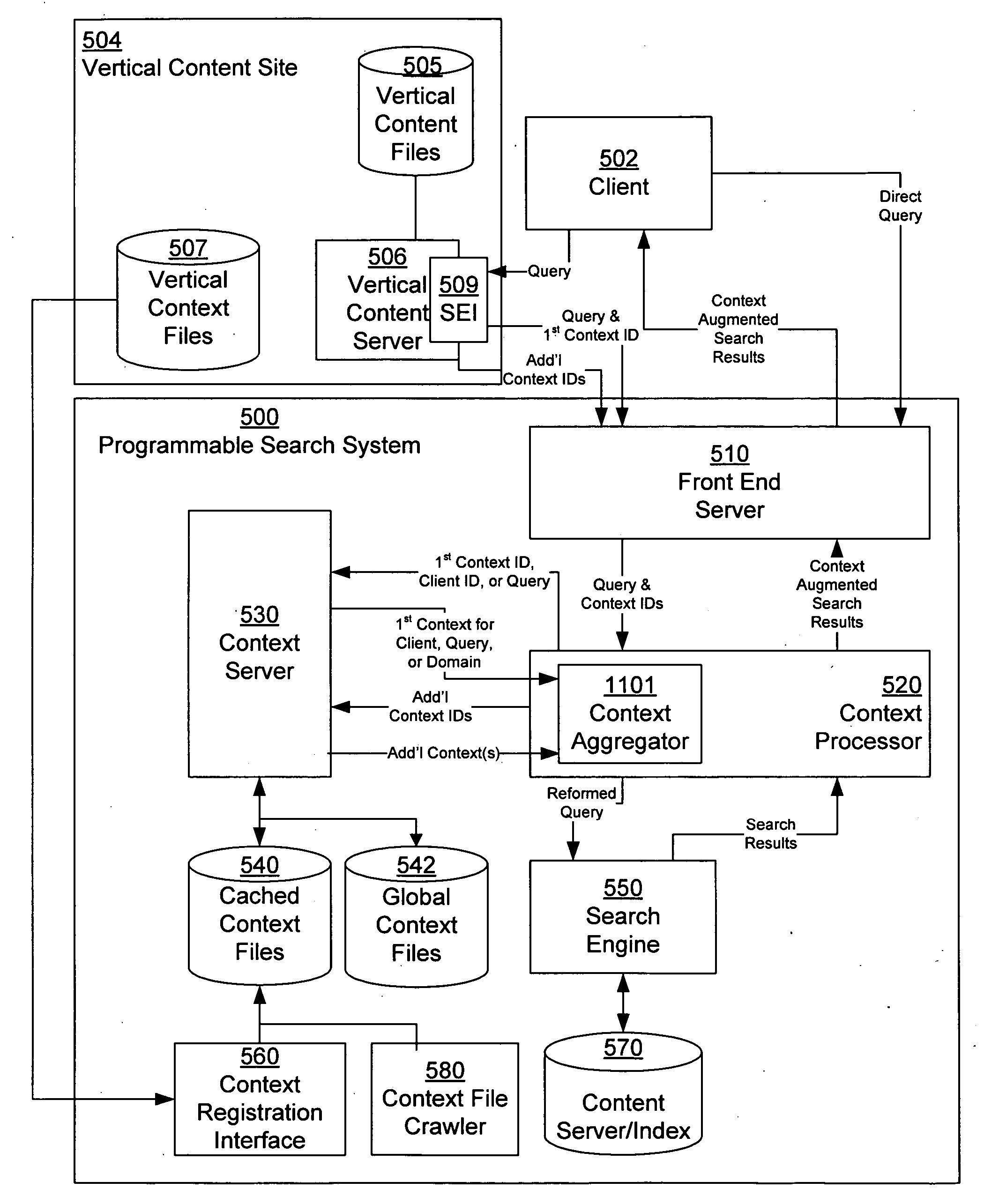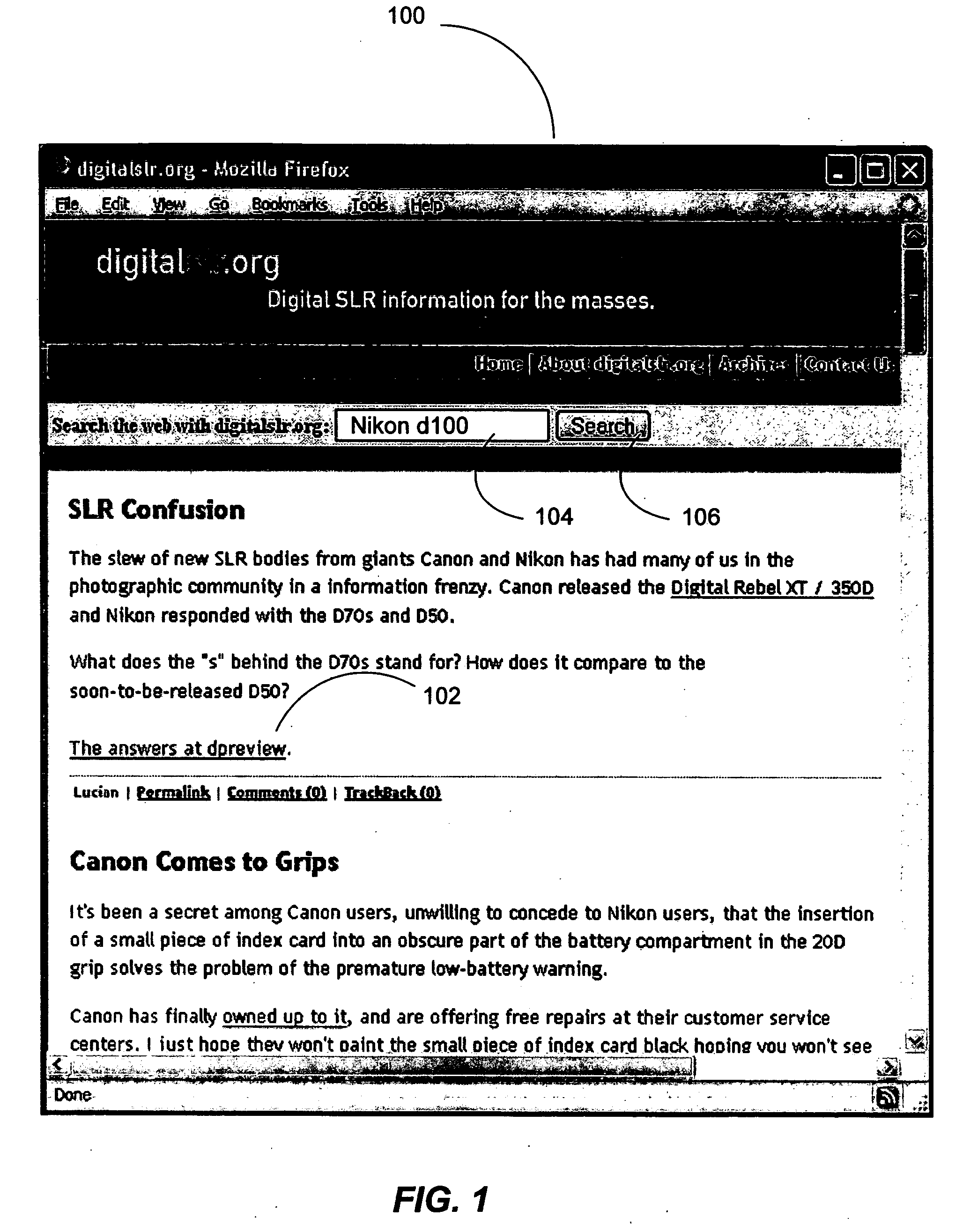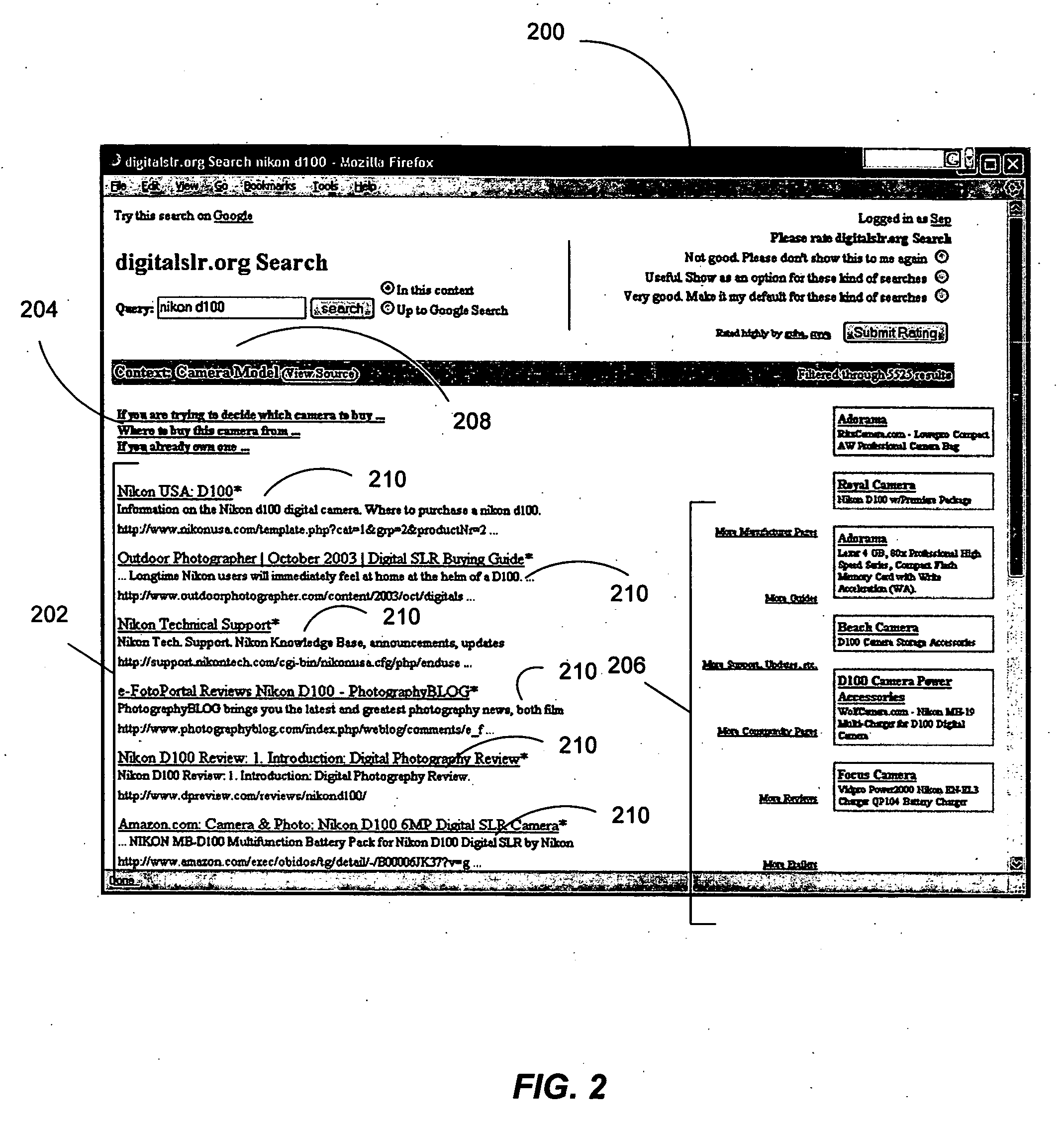Aggregating context data for programmable search engines
a search engine and context data technology, applied in the field of search engines, can solve the problems of inability to fully capture user intent, inability to determine user intent, and inability to search for user intent, etc., and achieve the effect of improving search results
- Summary
- Abstract
- Description
- Claims
- Application Information
AI Technical Summary
Benefits of technology
Problems solved by technology
Method used
Image
Examples
Embodiment Construction
Introduction to Programmable Search
[0033] Referring now to FIGS. 1-3, there is shown an example of the user experience in using a programmable search system in accordance with an embodiment of the present invention. In FIG. 1 there is shown a page 100 from a host site, digitalslr.org, which is an example of a vertical content site, here the field of digital cameras. Content and organization of page 100 reflect the viewpoint and knowledge and of the entity that provides the site content. A vertical content site can be on any topic, and offer any type of information, and thus is not limited in that regard. For example, vertical content sites include sites on particular technologies or products (e.g., digital cameras or computers), political websites, blogs, community forums, news organizations, personal websites, industry associations, just to a name a few. What vertical content sites offer is a particular perspective and understanding of the world, one that may be of interest and va...
PUM
 Login to View More
Login to View More Abstract
Description
Claims
Application Information
 Login to View More
Login to View More - R&D
- Intellectual Property
- Life Sciences
- Materials
- Tech Scout
- Unparalleled Data Quality
- Higher Quality Content
- 60% Fewer Hallucinations
Browse by: Latest US Patents, China's latest patents, Technical Efficacy Thesaurus, Application Domain, Technology Topic, Popular Technical Reports.
© 2025 PatSnap. All rights reserved.Legal|Privacy policy|Modern Slavery Act Transparency Statement|Sitemap|About US| Contact US: help@patsnap.com



